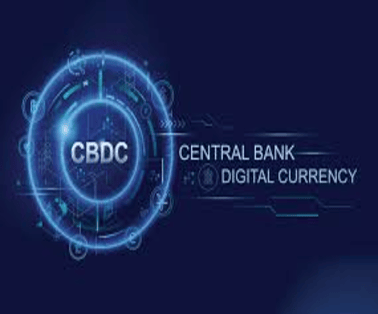The Reserve Bank of India (RBI) is leading the way in developing advanced features for India’s Central Bank Digital Currency (CBDC), also called the e-rupee. Governor Shaktikanta Das recently highlighted innovations aimed at enhancing privacy, programmability, and offline usability to ensure CBDC adoption across diverse user groups.
Key Updates on India’s CBDC
- Governor Shaktikanta Das said that permanent deletion of transactions can make the e-rupee or central bank digital currency (CBDC) become anonymous and make it at par with paper currency
- Das said India is also working on making the CBDC transferable in the offline mode along with introducing the programmability feature to help its financial inclusion goals.
- It can be noted that since the introduction of the CBDC in late 2022, there have been concerns about the privacy aspect, with some saying that the electronic nature will leave a trail of where all the currency has been used, unlike cash which offers anonymity.
- In February this year, Das announced the offline and programmability features of the CBDC.
- Das said that despite the efforts which are being undertaken by the Reserve Bank, the RBI still sees preference for UPI (unified payment interface) among retail users.
- India has made CBDC non-remunerative, by making it non-interest bearing to mitigate any potential risks of bank disintermediation, Das said, adding that the central bank creates the CBDC and the banks distribute it.
- To widen the reach of the e-rupee, the RBI recently announced the participation of non-banks in the pilot with the expectation that their reach can be leveraged for distribution of CBDCs and for providing value-added services, he added.
What is Central Bank Digital Currency (CBDC)?
- A CBDC is a legal tender issued by a central bank in digital form.
- Unlike private cryptocurrencies, CBDCs are backed by the central bank, ensuring stability and trust.
- It is the same as a fiat currency and is exchangeable one-to-one with the fiat currency.
- A fiat currency is a national currency that is not pegged to the price of a commodity such as gold or silver.
- The digital fiat currency or CBDC can be transacted using wallets backed by blockchain.
- Though the concept of CBDCs was directly inspired by Bitcoin, it is different from decentralised virtual currencies and crypto assets, which are not issued by the state and lack the ‘legal tender’ status.
- For a broader understanding of what CBDCs and the e-Rupee are, you can refer to this detailed explainer.
What are the types of e-rupee in India?
- Based on the usage and the functions performed by the digital rupee and considering the different levels of accessibility, CBDC can be demarcated into two broad categories — general purpose (retail) (CBDC-R) and wholesale (CBDC-W), the RBI’s concept note says.
- Retail CBDC is an electronic version of cash primarily meant for retail transactions. It will be potentially available for use by all — private sector, non-financial consumers and businesses — and can provide access to safe money for payment and settlement as it is a direct liability of the central bank.
- Wholesale CBDC is designed for restricted access to select financial institutions. It has the potential to transform the settlement systems for financial transactions undertaken by banks in the government securities (G-Sec) segment, inter-bank market and capital market more efficiently and securely in terms of operational costs, use of collateral and liquidity management.
Models for CBDC Issuance
- There are two models for issuance and management of CBDCs under the RBI’s consideration — direct model (single tier model) and indirect model (two-tier model).
- In the direct model, the central bank will be responsible for managing all aspects of the digital rupee system such as issuance, account-keeping and transaction verification.
- An indirect model would be one where the central bank and other intermediaries (banks and any other service providers), each play their respective role.
- In this model, the central bank will issue CBDC to consumers indirectly through intermediaries and any claim by consumers will be managed by the intermediary.
Online and Offline
- The offline functionality as an option will allow CBDC to be transacted without the internet and thus enable access in regions with poor or no internet connectivity.
- It will also create digital footprints of the unbanked population in the financial system, which will facilitate the easy availability of credit to them.
- However, the RBI feels in the offline mode, the risk of ‘double-spending’ will exist because it will be technically possible to use a CBDC unit more than once without updating the common ledger of CBDC.
- But it can be mitigated to a larger extent by technical solutions and appropriate business rules including monetary limits on offline transactions, the central bank says.
Benefits of CBDC for India
- CBDCs leverage digital security measures, potentially reducing the risk of counterfeiting and theft compared to physical cash.
- Digital transactions can be settled instantly and efficiently, facilitating faster and more cost-effective payments.
- CBDCs can potentially reach unbanked and underbanked populations by offering a secure and accessible digital payment option.
- The increased use of CBDC could be explored for many other financial activities to push the informal economy into the formal zone to ensure better tax and regulatory compliance.
- The possibility of permanent transaction deletion is being explored to provide users with a level of anonymity comparable to cash transactions.
- CBDCs possess unique attributes that can revolutionise cross-border transactions.
Challenges of Implementing CBDC
- Robust security measures are crucial to protect the e-rupee system from cyberattacks.
- Balancing user privacy with the need for anti-money laundering and countering financing of terrorism measures is a critical aspect.
- CBDCs could potentially compete with private banks for deposits, impacting their ability to lend and invest.
- Finding a way for CBDCs to coexist with the existing financial system is necessary.
- The impact of CBDCs on monetary policy tools like interest rates remains unclear.
- Central banks will need to adapt their policies to accommodate CBDCs effectively.
- The NFHS-5also provides data segregation based on the rural-urban divide. Only 48.7% of rural males and 24.6% of the rural females have ever used the internet. So, CBDC may wide gender-based hurdle in financial inclusion along with digital divide.
Global Landscape of CBDCs
- More than 100 countries are exploring CBDCs, according to the Atlantic Council’s Central Bank Digital Currency Tracker, an interactive map tool.
- Ten countries have already launched their own digital currency, including Nigeria in Africa and Jamaica in the Caribbean.
- The Bahamas in the West Indies was the first country in the world to roll out a national central bank digital currency, called the Sand Dollar, in October 2020.
- Nineteen countries in the G20 – which represents the world’s largest economies – are exploring central bank digital currencies, including Japan, India, Russia and South Korea.
- the US and UK are researching CBDCs, but have not yet committed to introducing them.
- China became the world’s first major economy to pilot a digital currency e-CNY in April 2020.
Conclusion
India’s approach to CBDC reflects a careful balance between innovation, privacy, and inclusion. With features like offline transfer and programmability, the e-rupee could redefine the way digital transactions are done in the country. While challenges exist, the CBDC’s evolution marks a key step toward a more secure and inclusive financial system.
To Download Monthly Current Affairs PDF Click here
Click here to get a free demo
Discover all about CLAT Exam



